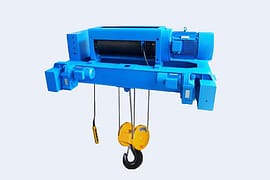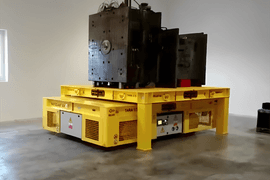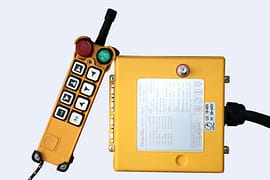3 Key differences between overhead and gantry cranes: choosing the right one for your factory
When it comes to lifting and moving heavy objects, both overhead bridge cranes and gantry cranes play a crucial role in various industries. Understanding the differences between bridge cranes and gantry cranes can save a lot of time, effort, and money during installation and usage.
The three main differences
- Spatial utilization capability:
Bridge cranes are installed on elevated runways of existing structures, allowing them to fully utilize the space beneath the bridge for material handling without being hindered by ground equipment. Gantry cranes, on the other hand, have their legs that restrict the available working area.
- Flexibility/Maneuverability:
Bridge cranes are attached to the internal structure of buildings and are permanent fixtures with fixed spans and lifting areas. This limits their flexibility. Gantry cranes, on the other hand, have greater maneuverability and flexibility. Since they are not installed on the structure of a building, they are easier to dismantle and move to different locations. They are self-supporting and can be easily moved both externally and internally, adapting to changing needs and applications.
- Applications:
Bridge cranes are installed inside the buildings where they work, making them ideal for warehouse-type factories that are often crowded and where every inch of space is valuable. They are widely used in heavy-duty applications in industries such as manufacturing, steel production, and automotive assembly, and are commonly found in workshops and warehouses. Gantry cranes are more versatile and can be used in a wider range of industries, including construction, shipping, and storage. They are mainly used for outdoor yard and bulk cargo handling operations and are extensively applied in port terminals.
Two practical examples to guide you in choosing the most suitable crane for your factory
- First example:
A user wants to install a bridge crane, but the original factory design does not have provisions for overhead traveling cranes. This means that the load-bearing capacity of the factory’s steel structure is not sufficient to meet the standards for installing a bridge crane. To install a bridge crane, additional columns and load-bearing beams would need to be added, resulting in high costs.
In order to save costs, an alternative option is to install a gantry crane inside the factory. Gantry cranes have their tracks on the ground, so they only require foundation and track installations without the need for columns and load-bearing beams. This can significantly reduce the overall cost compared to a bridge crane. Some users may consider whether the installation of tracks would affect other handling equipment inside the factory, such as forklifts. However, this issue can be resolved by embedding the tracks at a height of at least 100mm above the ground to ensure a unified level with the floor.
Installing a gantry crane requires the excavation of foundations, which also requires significant funds. If it is a gantry crane with a capacity of 5 tons or less, it is possible to consider laying a steel plate foundation on the ground and fixing it with high-strength bolts. This can help save the cost of the track foundation. However, it may cause some inconvenience to the passage of other vehicles.
- Second example:
A user intends to install a gantry crane inside the factory. Conventionally, using a bridge crane inside the factory is more convenient and slightly cheaper. However, installing a gantry crane inside the factory comes with several disadvantages, such as a relatively smaller lifting space, the need to create foundations for the tracks, time-consuming and labor-intensive installation, and the inability to place items on the track surface and its sides. However, due to the factory being designed for a 5-ton bridge crane, and the user’s requirement being a 10-ton crane, there is a concern that the factory’s load-bearing capacity may not meet the requirements for a 10-ton crane.
Many users have encountered similar situations, and in some cases, choosing a bridge crane is still possible. The load-bearing capacity of the factory structure is determined based on the wheel pressure of the crane. Conventional bridge cranes have 4 wheels, but it is possible to customize them with 8 wheels to distribute the wheel pressure. In other words, compared to a 4-wheel bridge crane, an eight-wheel crane exerts less force on the factory structure, even if both have a 10-ton capacity. Additionally, European-style cranes can be chosen to reduce the self-weight of the crane.
Conclusion:
Generally, bridge cranes are used in industrial facilities. However, if the existing conditions in your facility do not support the installation of a conventional bridge crane, you can install a gantry crane or customize a bridge crane that meets your facility’s requirements.
The above are two common situations encountered by users, and the choice between a bridge crane and a gantry crane should be based on the specific circumstances and requirements of the customer.
If you still feel uncertain before making the final decision, you can always contact us for a free consultation and quotation. We provide a range of robust, durable, and high-performance bridge cranes and gantry cranes that can be customized to meet your application requirements.
https://www.dgcrane.com/contact-us/
DGCRANE will ensure that you get the crane that best suits your business needs.
























































































































